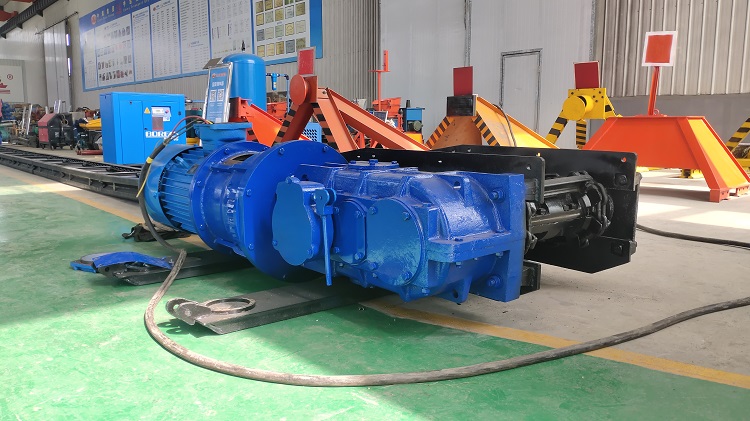

market@chinacoalintl.com
4 major reasons and 8 major measures have been prepared, so don’t be afraid of encountering them! Coal conveyor belt tearing accidents can be roughly divided into two categories: longitudinal tearing and horizontal tearing. Among them, longitudinal tearing accounts for more than 90% of the total number of belt tearing failures. Therefore, longitudinal tearing is the object here. Analyze the cause of the crack.
Analysis of the cause of the belt tear:
The belt runs sideways and tears
When the coal conveyor is in normal operation, its belt should be located at the central axis of the frame, and when the belt is running out of direction, it will cause the belt to stack and fold on the side of the deviation, which will act on the unbalanced force for a long time. The belt is prone to tearing failure.
Generally speaking, this kind of situation will only occur on the side of the belt and not on the inner side of the belt, which poses less threat to production safety. At the same time, this kind of belt tearing phenomenon has a more obvious sign, from the occurrence of belt deviation to the occurrence of Tearing has a longer reaction time, so it can be prevented through inspection and maintenance.
1, the belt shaft core is torn
When the coal conveyor is running, if it is subjected to a strong impact from large metal materials or gangue, it may cause the belt steel core to break. The steel core at the break may continue to be used, and it may penetrate the belt under the influence of long-term stretching and load-bearing. And exposed outside the belt cover rubber. When the exposed length of the steel core is long, it may be drawn into components such as idler rollers and steering rollers when the belt is running, and will be continuously drawn out as the belt is running, causing the belt to break.
There is also a situation where the head cleaner scraper clamps metal or other debris on the surface of the belt and grinds the belt through. Preventing this kind of tearing can only enhance the patrol vision. When the exposed wire rope head is found, it should be cut off immediately to avoid future troubles.
2, scratch and tear
In the belt longitudinal tear, scratch and tear is a common situation, usually can be divided into two types of sharp tool pressure scratches and penetrating scratches. The former is a large-size long rod sharp tool stuck at the bottom of the chute, and the belt is scratched by the driving force of the belt; the latter means a sharp tool falls from a certain height, and its tip penetrates the belt under the influence of gravity and gets stuck in the belt. On the chute or idler, as the belt continues to move forward, the belt is torn.
3, material jamming and tearing
This situation occurs in the lower part of the chute. Because the distance between the front of the chute and the belt surface is limited, and the buffer rollers under the belt are spaced apart, the natural bearing capacity is uneven. When the unilateral projection length of the transported material exceeds this distance, Under special circumstances, it is easy to cause a large piece of material to be stuck between the front edge of the chute and the belt, and the belt is squeezed forcefully to cause tearing.
There is also a situation that when the feed at the loading point suddenly increases and the belt is loaded, the belt is torn after a long period of friction when the system is not shut down due to the clogging.
Countermeasures to prevent belt tearing
Proactively prevent tearing from the source
Strengthen the control of material quality and increase impurity removal equipment for impurity removal. A large block removal device is installed in front of the primary belt to reduce the large block material from entering the entire conveying system.


© Shandong China Coal Group. © 2017
Address: No. 11, North of Kaiyuan Road, High-tech Zone, Jining City, Shandong Province, China
sales@chinacoalintl.com
Executive Editor: Zhang Wen / Editor: Linda Zhang